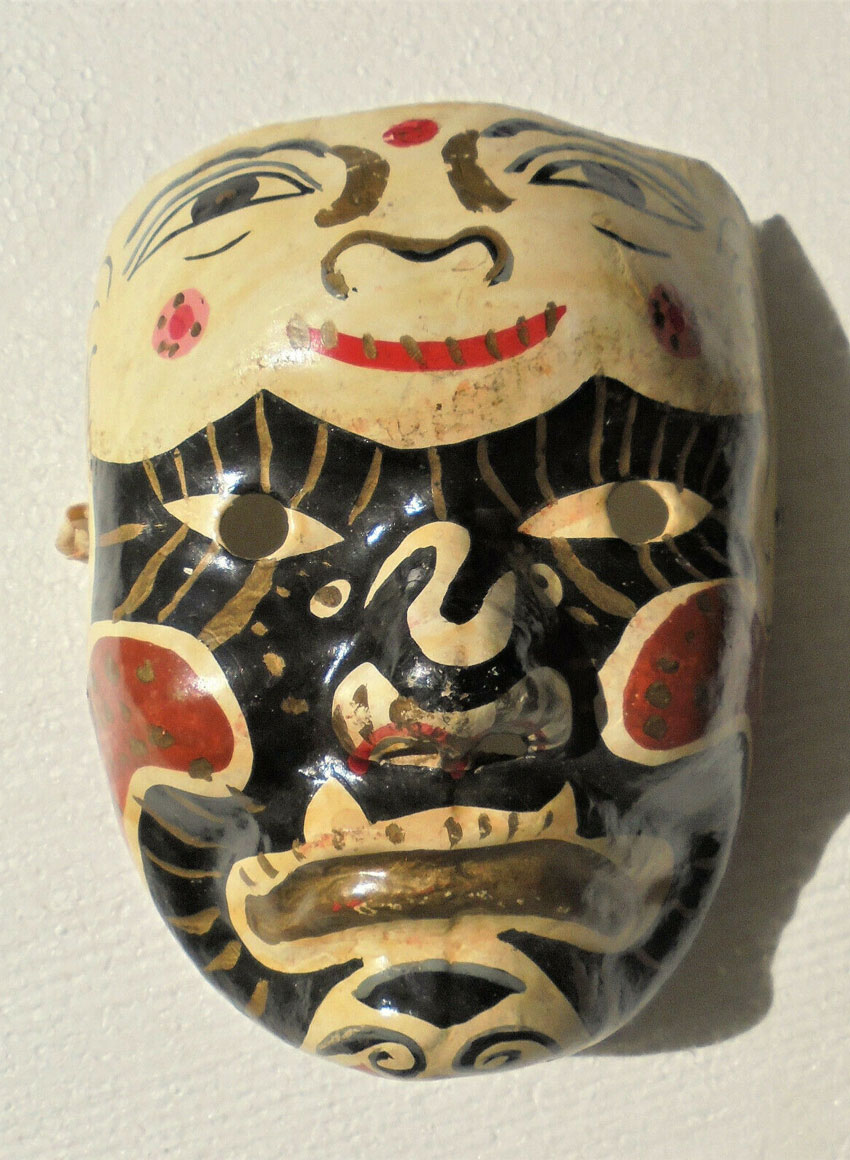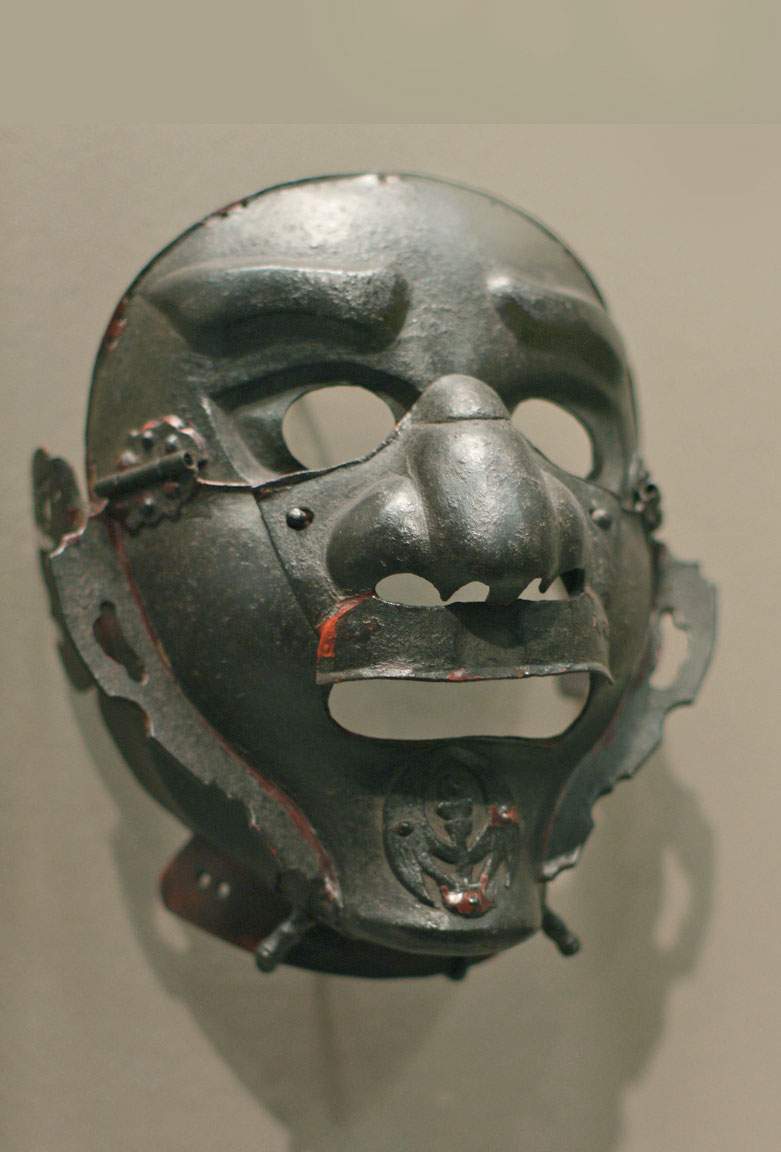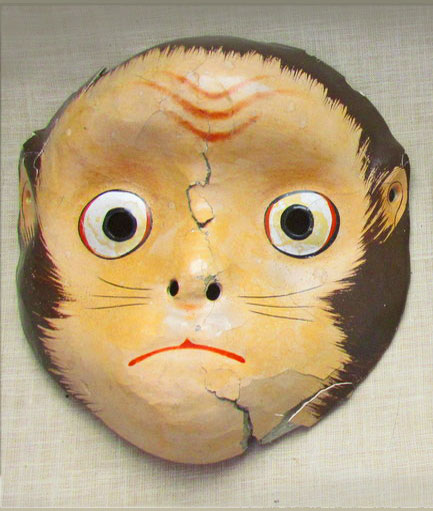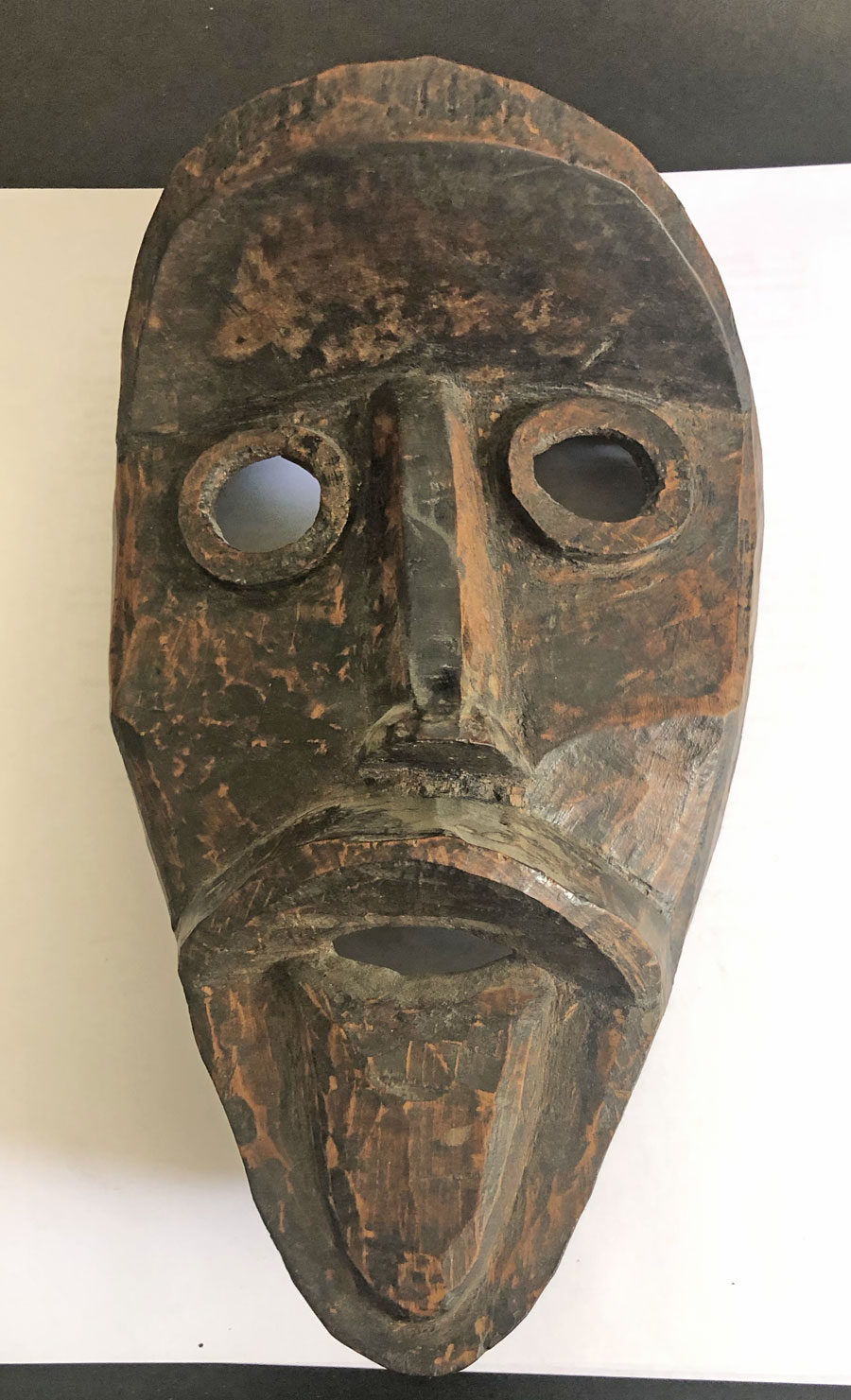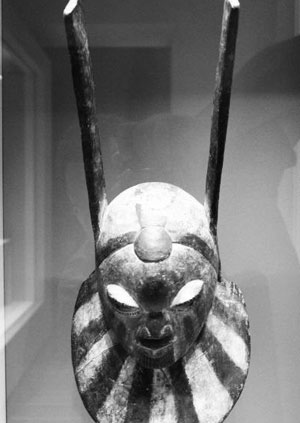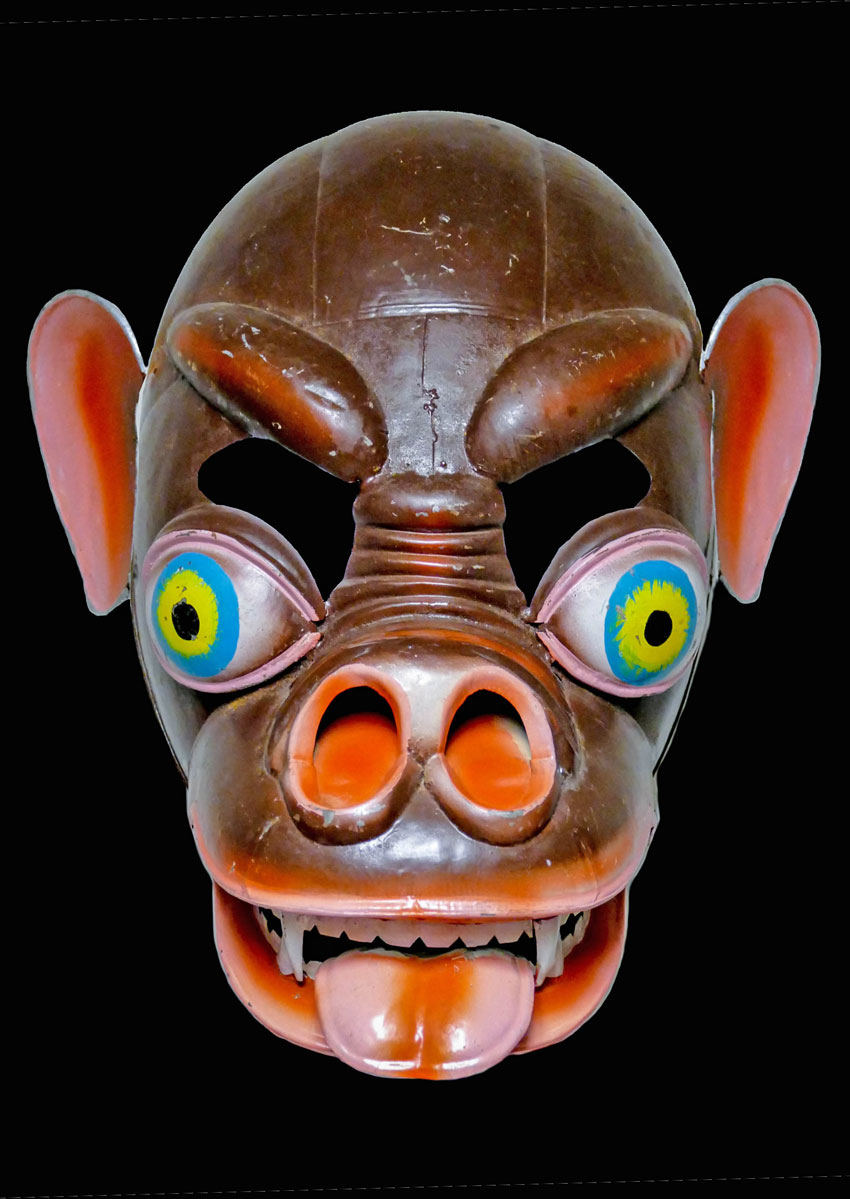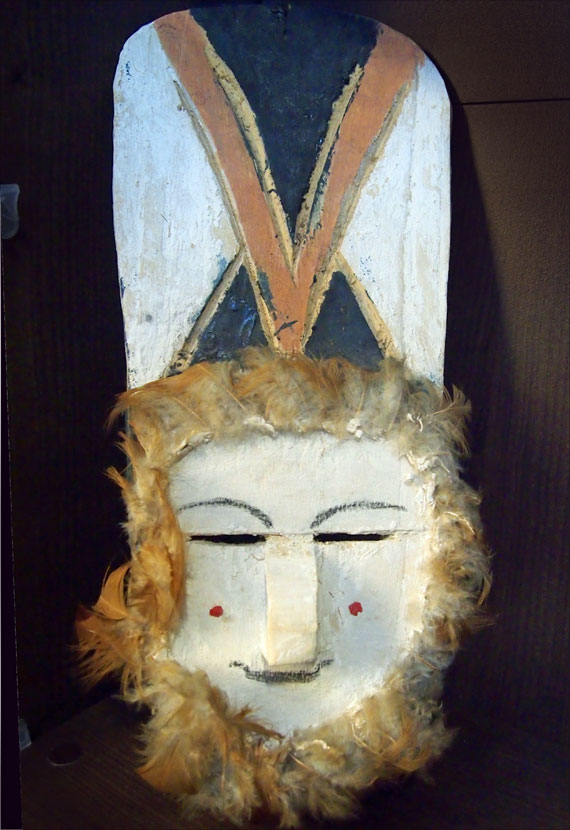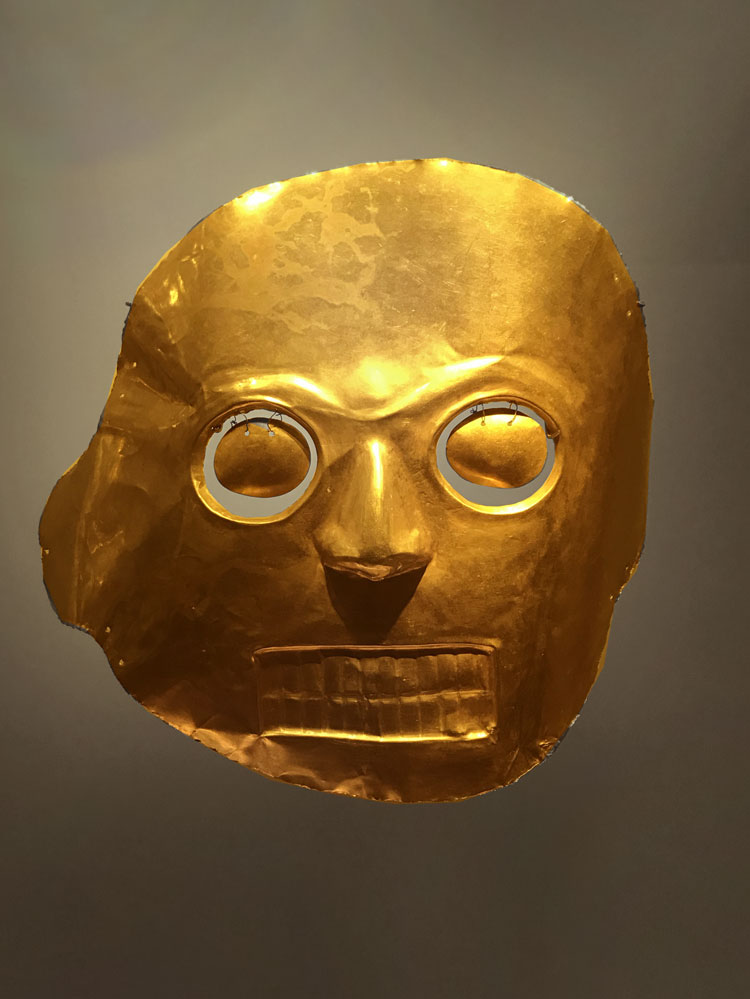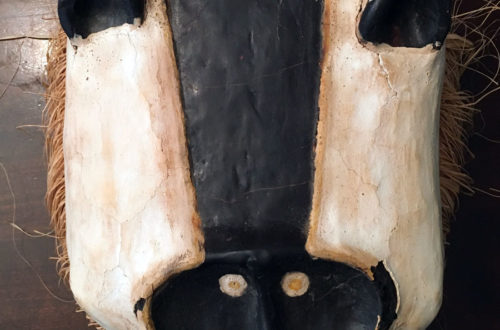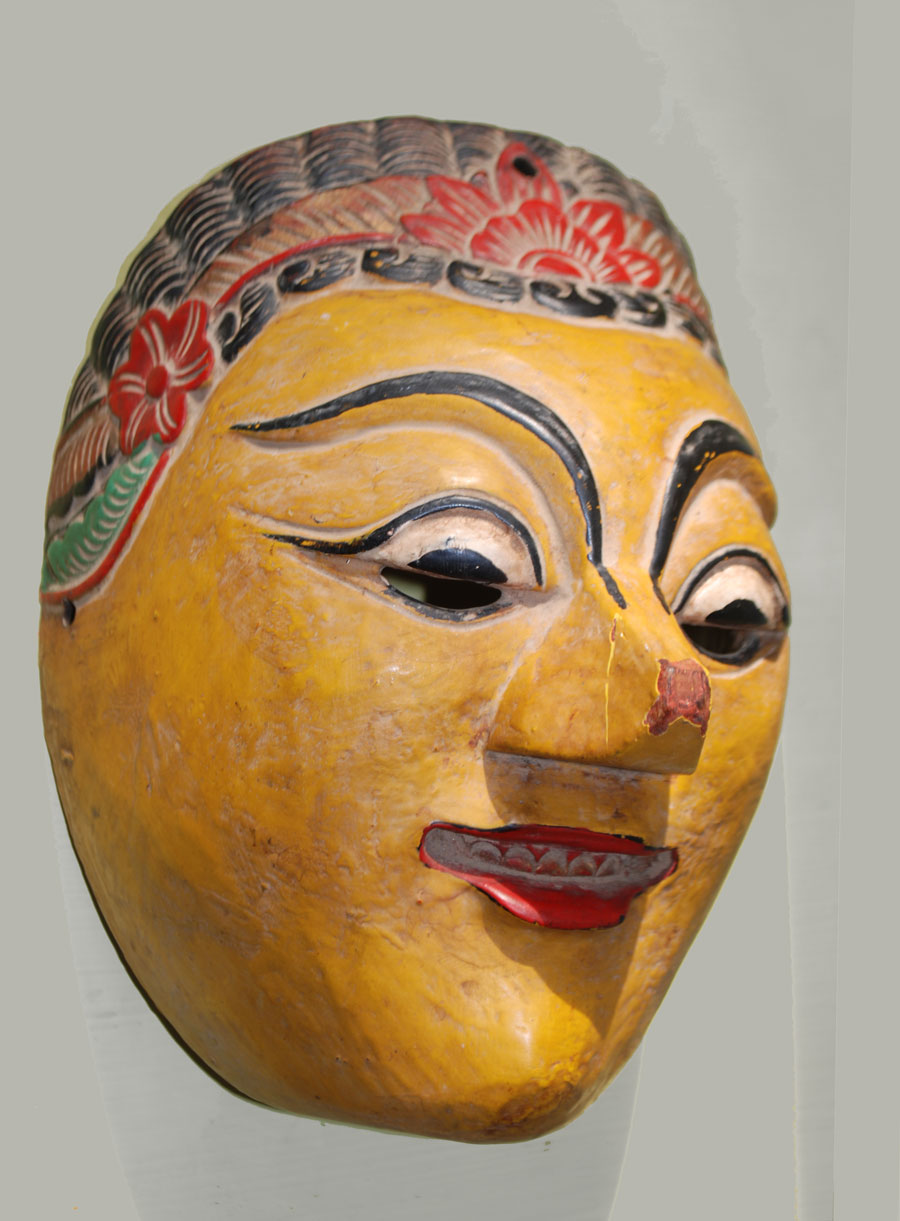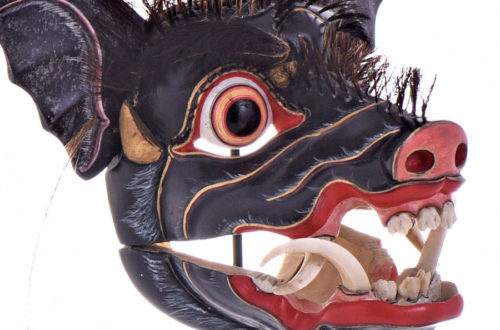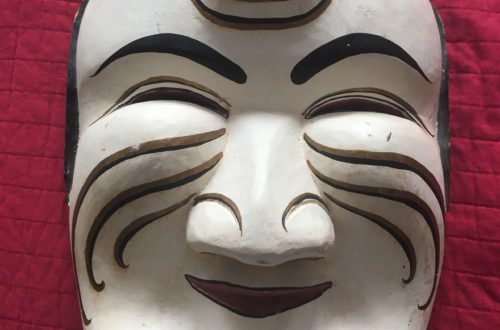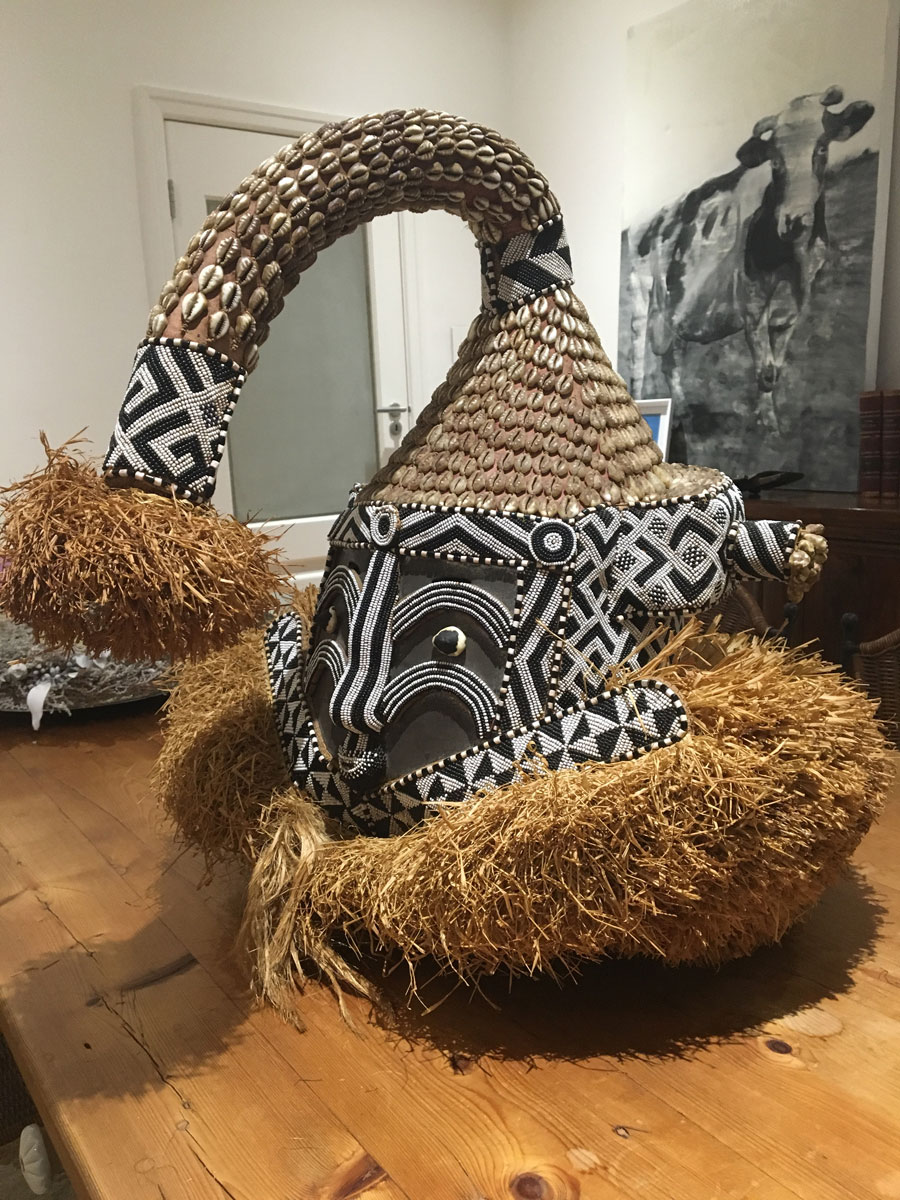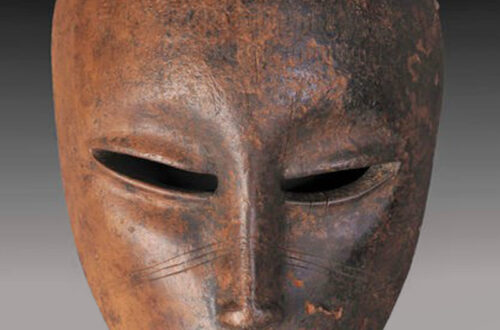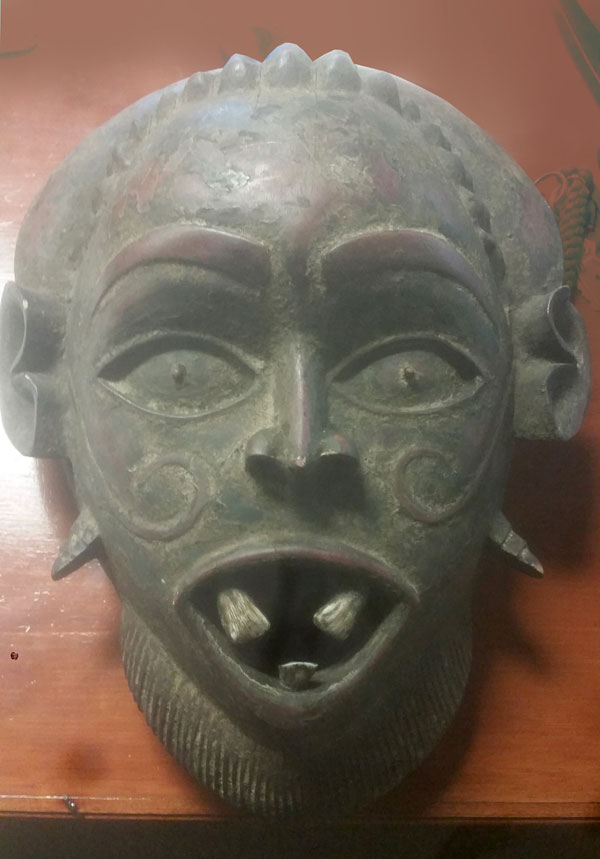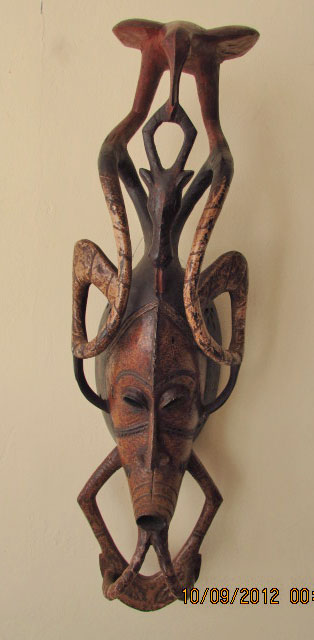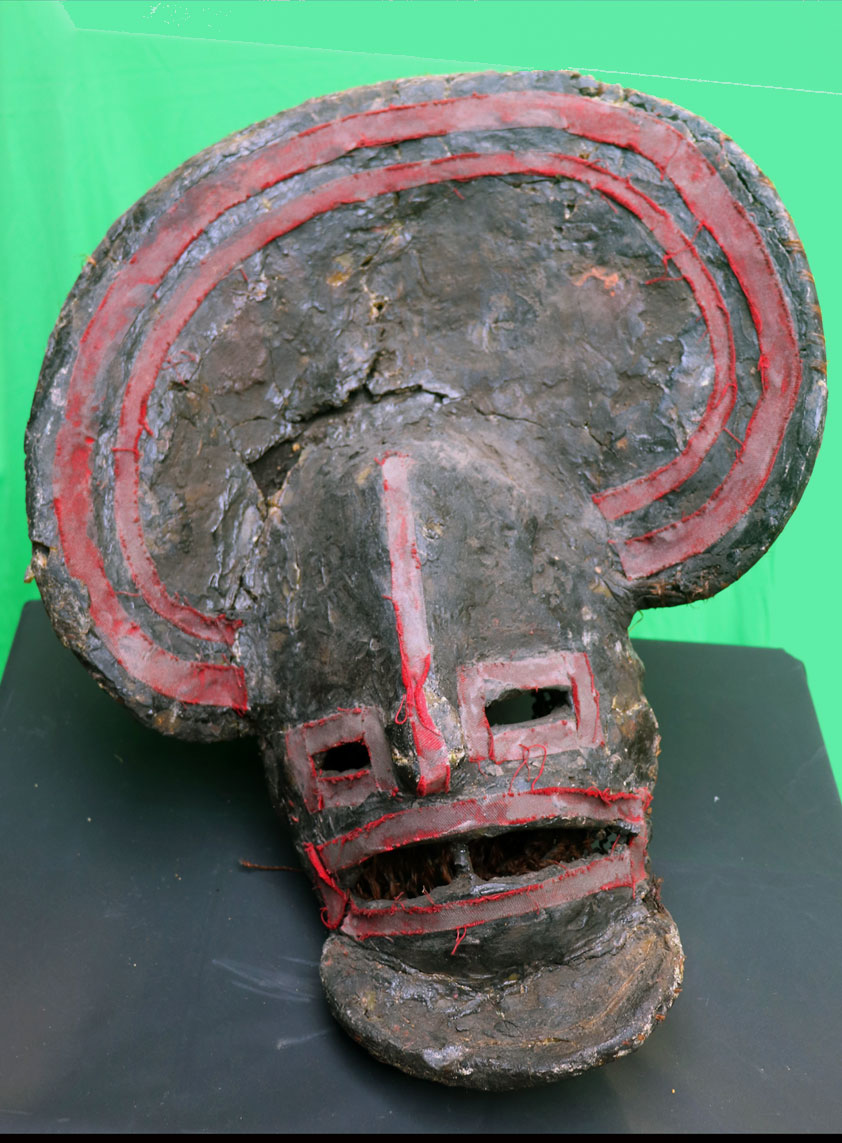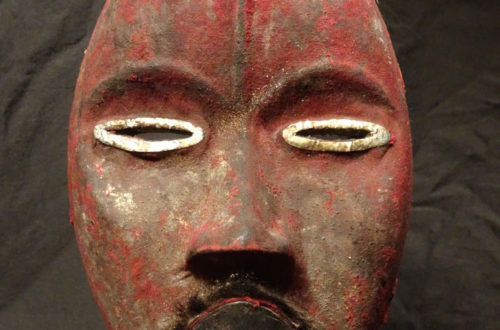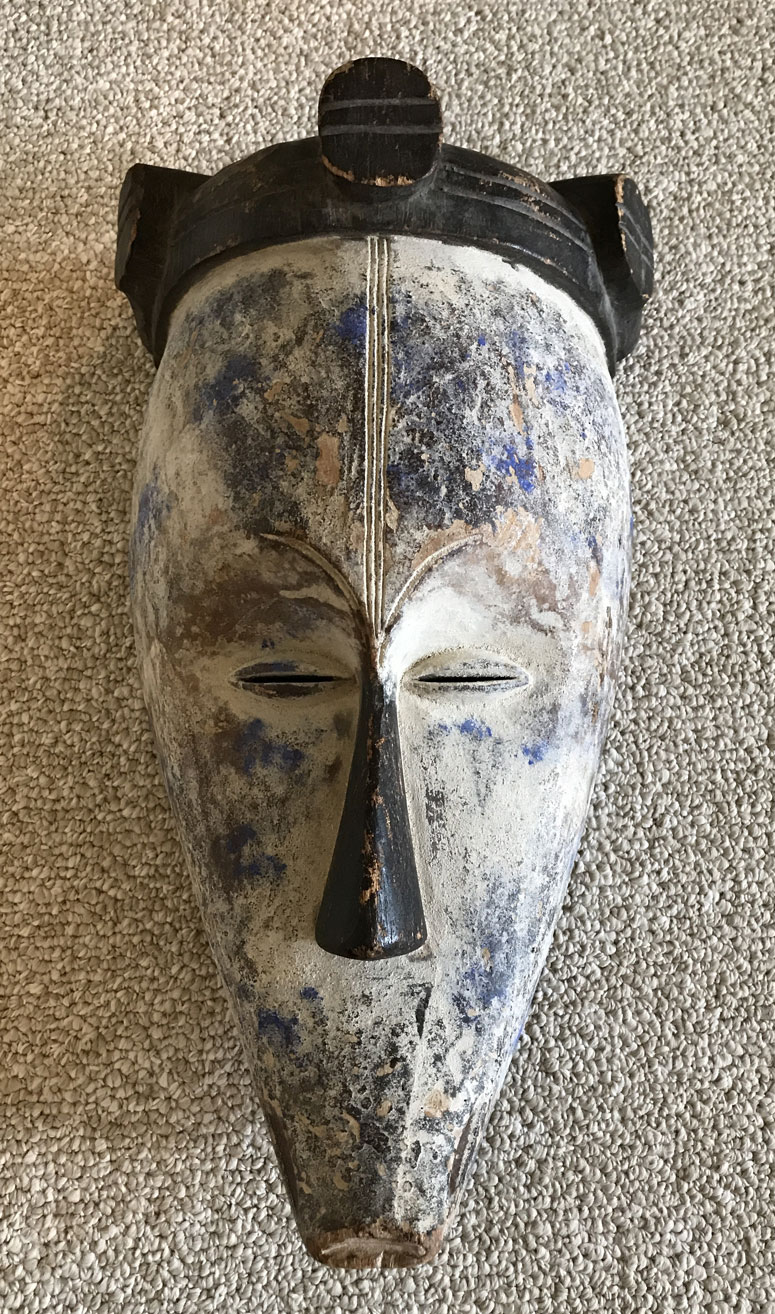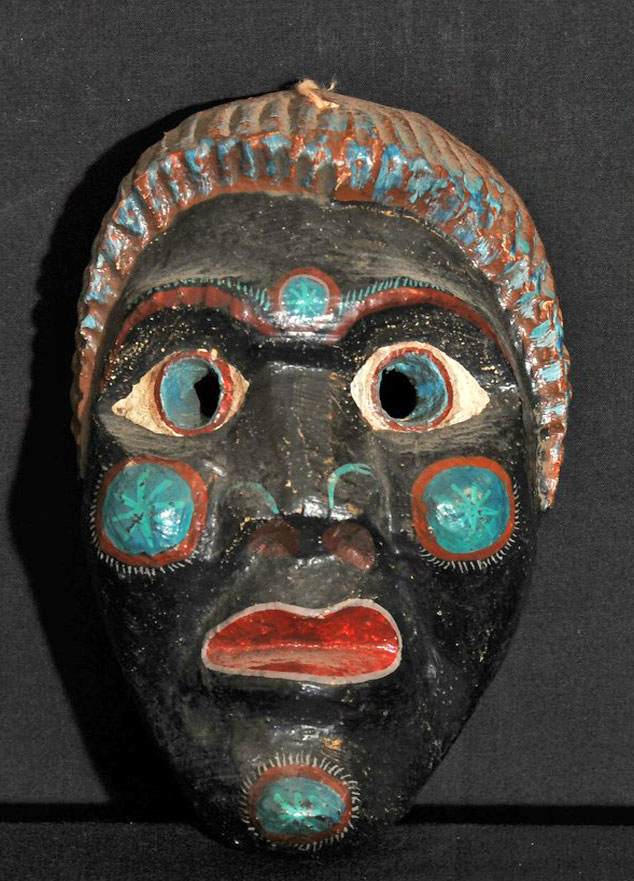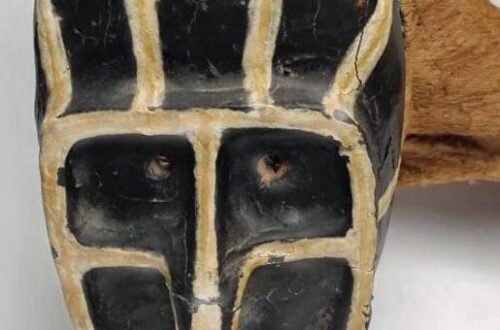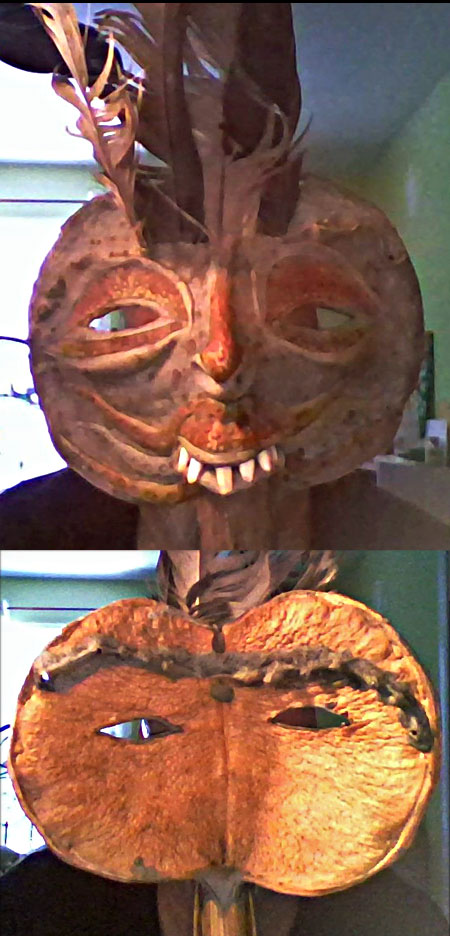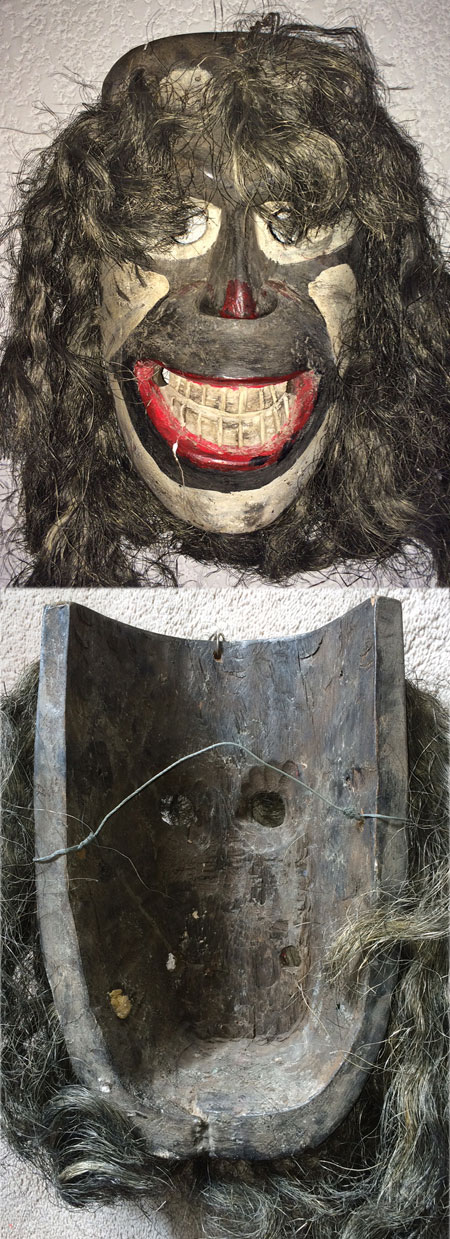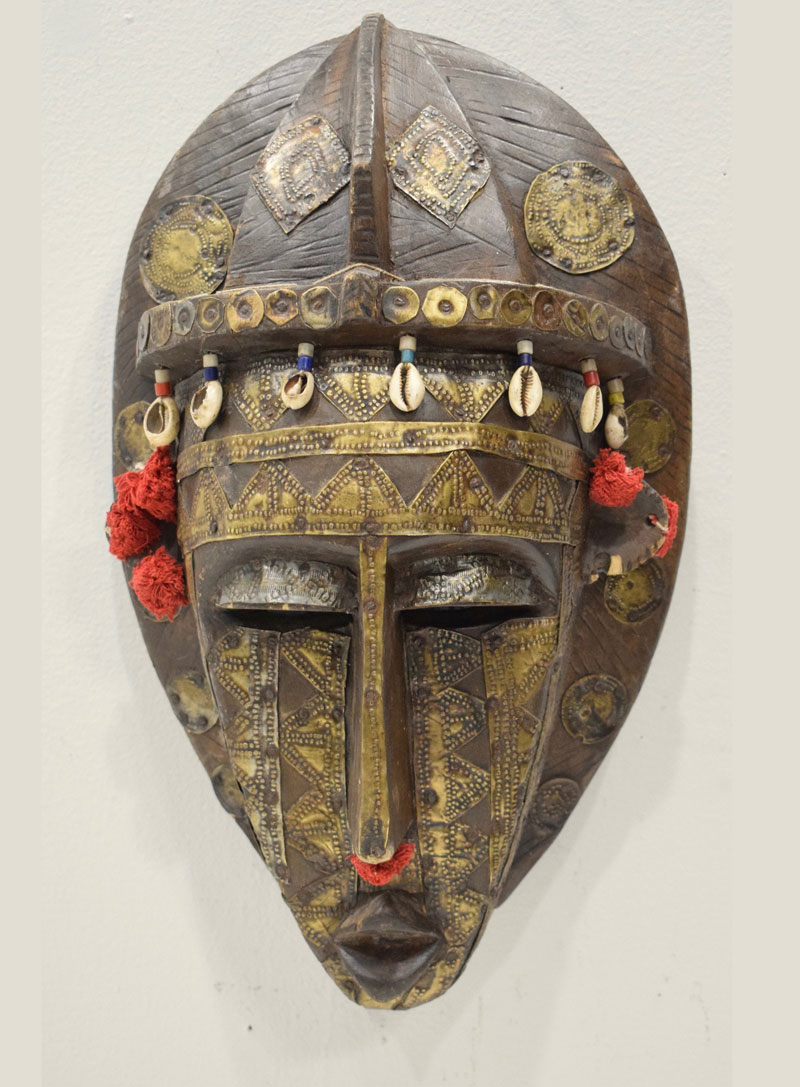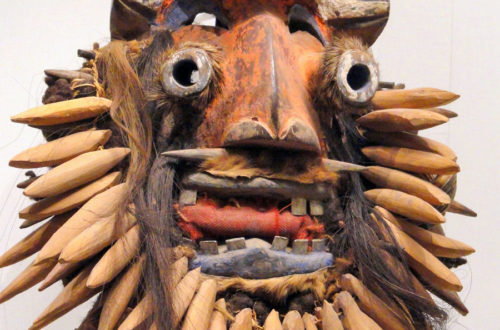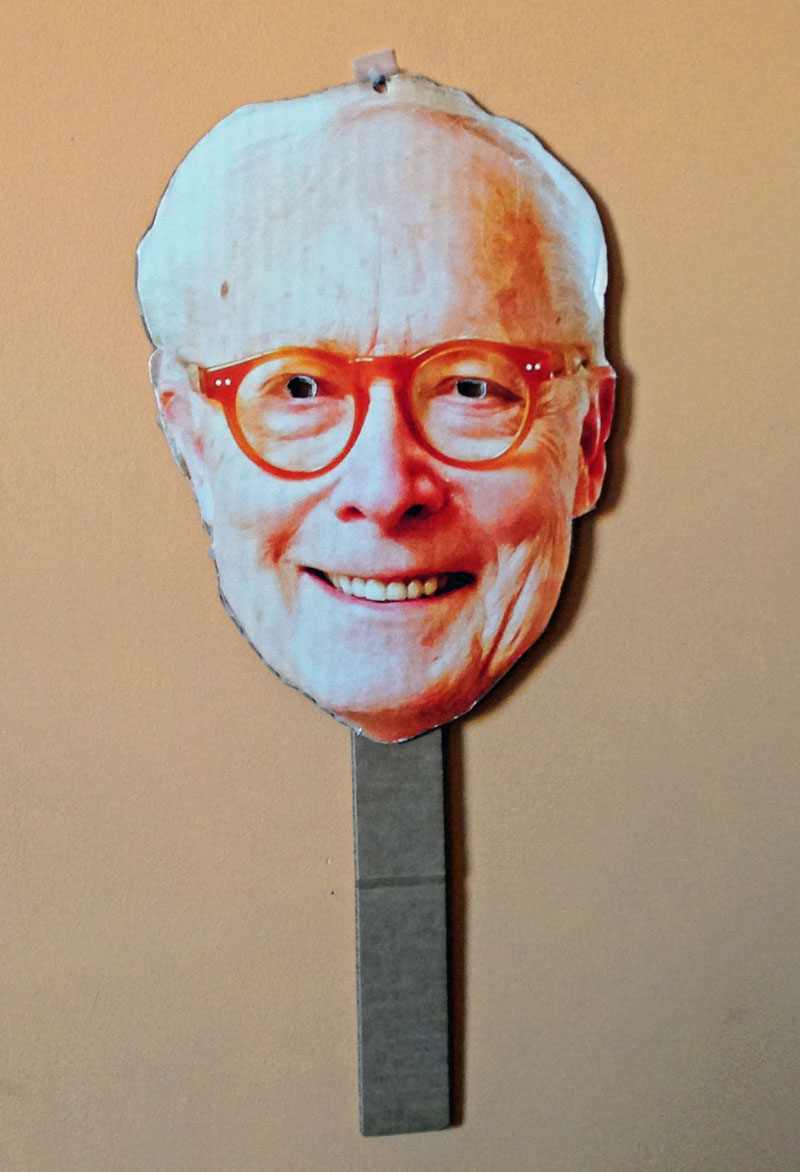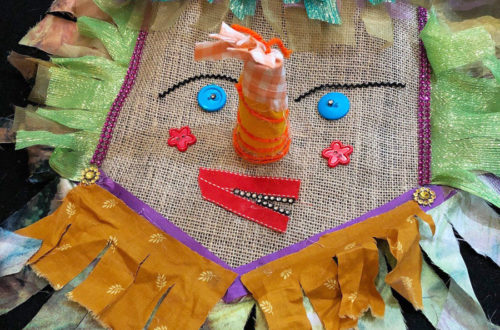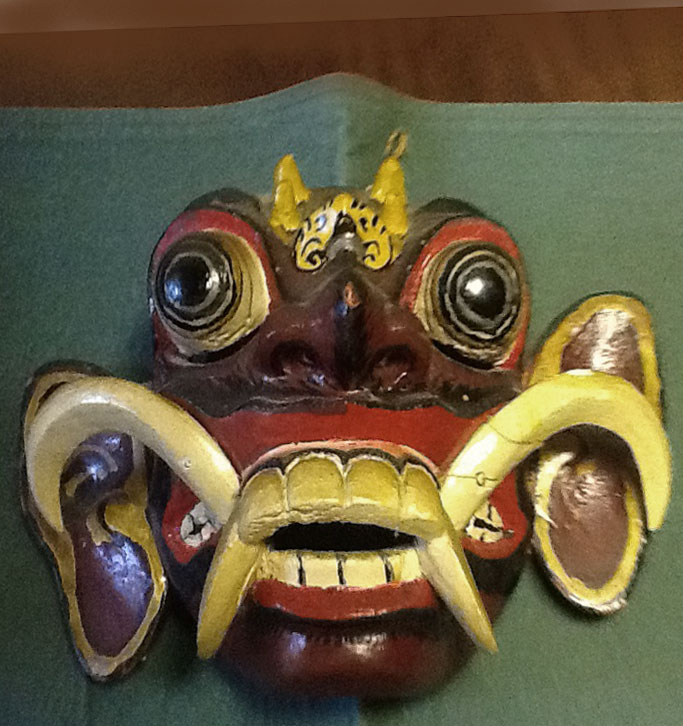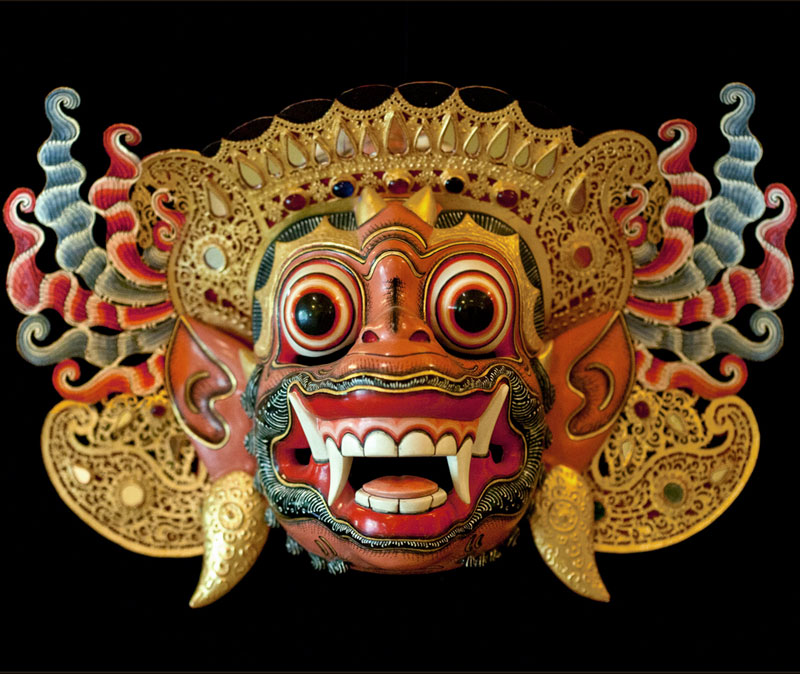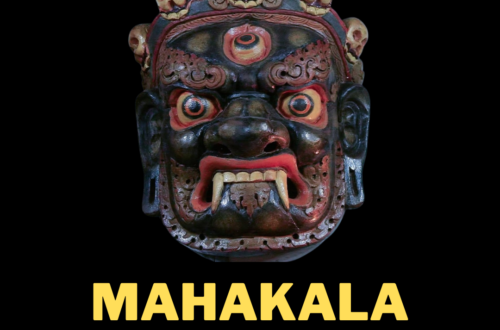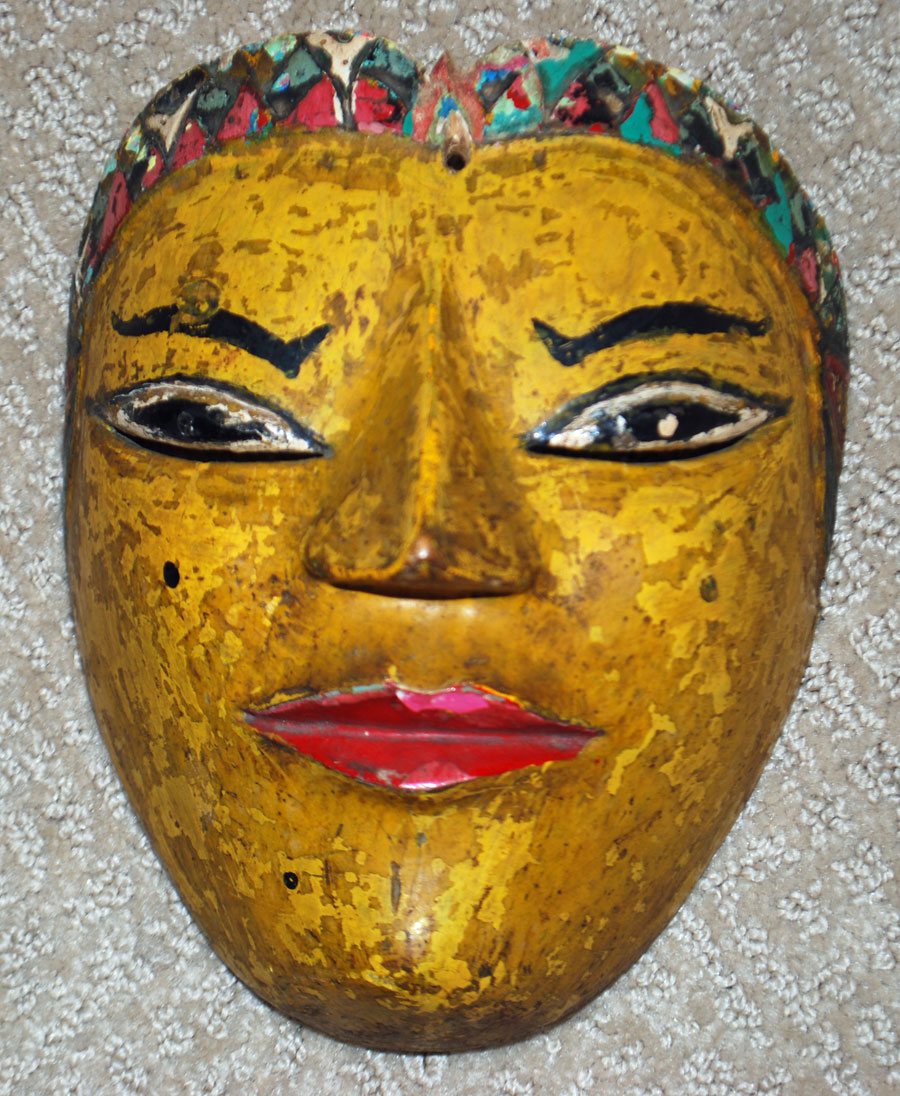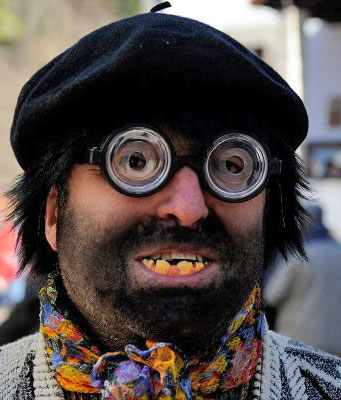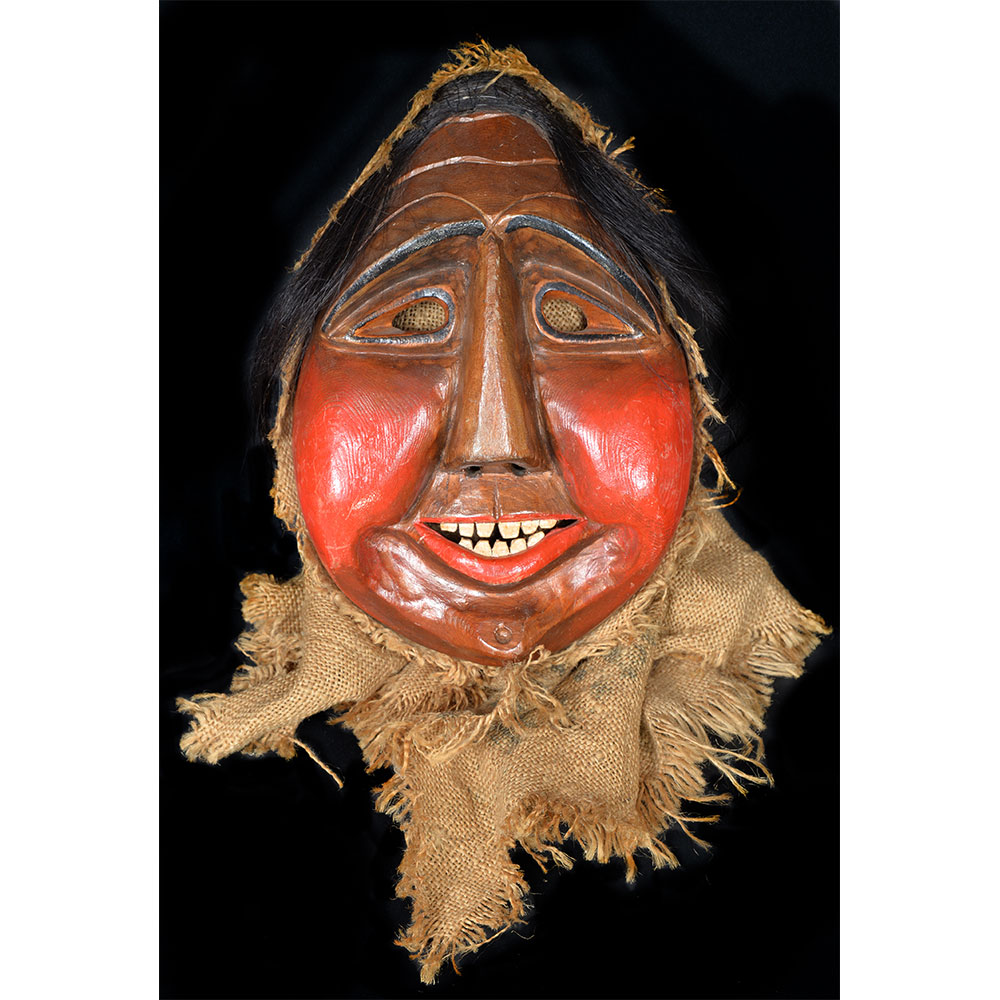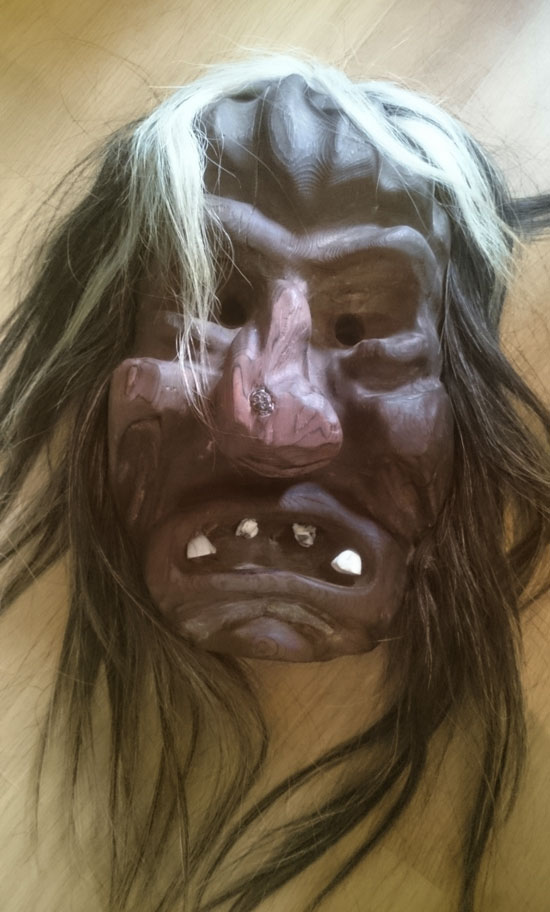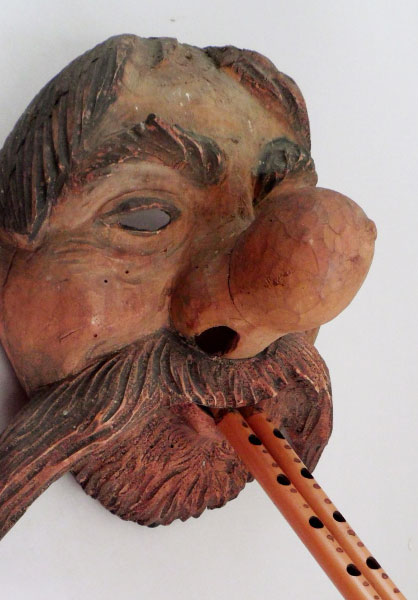Q: This time I sent you a mask of the Beijing theater. I suppose it may be original because on the back, under the nostrils, I saw a stain that could be caused by the breath. I hope I got it right this time. Monica, 1572 A: You are right. Peking and Beijing opera, are the most dominant form of Chinese opera which combines music, vocal performance, mime, dance and acrobatics. These are performed all over the country. The number of these masks being made is huge. Papier mache opera mask are probably the favorite method performers use as makeup. Since such opera masks are used in representing various human…
-
-
Old We/Guere mask
Q: This mask was given to my mother, Mary Ellen Goodman, PhD, by one of her professors, the famous anthropologist Clyde Kluckhohn, probably in the late 1930s. I’ve always loved it but don’t know anything about it. Images are shot against an 8.5×11 inch paper for scale. Lanny, 1571 A: This is probably an old We Guere Mask from the people of Cote d’Ivoire. If it was found in a thrift shop or on eBay, I would dismiss it as a cheap tourist mask. But because of the family provenance, I think we should look at it more closely. The size and wood seems right. None of the surfaces are…
-
Metal monkey mask from Bolivia
Q: Bob, thought you might enjoy this Bolivian mask I picked up a while back for $90 online. It’s painted tin, as many of the Bolivian carnival masks are, but it’s an unusual monkey form that I’ve never seen before. Dan, 1570 A: Bolivian celebrations feature all kinds of masks. Probably the condor is their most common animal mask, and for almost 50 years of collecting I have seen others. Masks are an essential part of Bolivian celebrations, allowing dancers to adopt the personalities which populate the country’s myths and legends. Demons, dragons and angels join representations of real-world creatures like birds, bears and beavers. Most interesting are the masks…
-
Classic Javanese dance mask
Q: I have an interesting mask to show you that I believe comes from Indonesia. I got it in a trade with another collector. It has some patina and sign of usage. Steve, 1569 A: Thanks for the improved photos. Your masks is from Java and represents a common character in their traditional dance dramas. Unfortunately, I still can’t be sure if it was used or artificially aged. Maybe one of our viewers will comment on that. Look at the beautiful colors that go so well with the classic yellow. Plus, the carving is skillfully done and almost paper thin. Weather it’s a repro or the real deal, I think…
-
Mwaash aMbooy Kuba mask
Q: Please find attached a Kuba mask, also collected by father in the 50’s. Exceptionally well made both in terms of craftsmanship and artistic symmetry. Facial cover made of iron plate. Height 62cm and width at base 45cm. It has been worn, but not much. Jan, 1568 A: Rarely does the Mask Man get to see high quality artifacts in his mail. Of course, elaborately beaded Kuba masks are popular with collectors and you can easily find them on the internet. But they won’t be quite as nice as this one. Please increase the size of these photos to appreciate the detail. The Kuba Kingdom, also known as the Kingdom…
-
Interesting fake from Cameroon, or authentic mask from Angola
Q: Hi, thank you for your help. I have this mask and can not find another one like it. What can you tell me! I have an excess of masks, and am trying to sell some of them. Diane, 1567 A: I haven’t seen one quite like this. A good guess is that it was made somewhere in Cameroon to look like an old and used Ekoi helmet mask. They are often of carved wood covered with animal skin and painted. The overall structure is of stiff basketry. If you try to sell it I hope you resist calling it an authentic Ekoi mask. It is instead a quickly made…
-
Mama Negra mask from Ecuador
The Quechua-speaking people who live in the mountainous regions of Ecuador are enthusiastic users of masquerade. Their well carved and painted masks can be easily recognized because of round eye holes and heavy hardwood. There are many different dances and even more characters. Mama Negra is one of the most famous. This example appears to be old, used, and has more detail than most. Each year in November, the city of Latacunga, Ecuador celebrates Mama Negra, a figure of national fame. The festival and parade originated in 1742 when local residents turned to the Virgin of Merced to save them from a possible eruption of the nearby Cotopaxi Volcano. Today,…
-
Muslim masks
I’m starting with a Marka mask from Mali, a country that is almost entirely Muslim. The second photo is a niqab, something you would expect to see in a Muslim country. Many African countries have a rich tradition of crafted masks. During the seventh century and the beginning of Islam, Muslims migrated to North Africa. They also pushed into territories further south that eventually became the Republic of Sudan, Chad, Niger, Mali, and several others. We know that the Islamic religion has always discouraged masquerade. But many of these African cultures had ancient artistic traditions in mask-making for indigenous celebrations. They made masks that represented spirits and gods. In their…
-
Old Balinese mask
Q: Wondering about the history of this mask. My grandfather was on the USS Baltimore during WW11. He brought this mask home, called her ‘Callie’, hung her over the back door and said she would ward off evil. No one remembers anything else. Kati, 1564 A: You have a mask made for the classic dance dramas of Bali. Poorly carved and painted, it is probably from a small village, 75 to 100 years ago. It has been quickly repaired and repainted to attract off-duty sailors. Because of its sloppy appearance and interesting history, I think it would add something unusual to a collection of Balinese masks. B-
-
Strange masks from Basque country
Q: Hi, I am Basque from the Spanish Basque Country, do you know anything about Basque masks? We have some in our traditions. Fernando, 1563 A: I know nothing about Basque masks. So I looked around the internet and found these four crazy masks from the the appropriate region of Northern Spain. All four seem to be photographed at local carnivals. Perhaps you could do some research, and maybe one of our viewers will have something to contribute as well.
